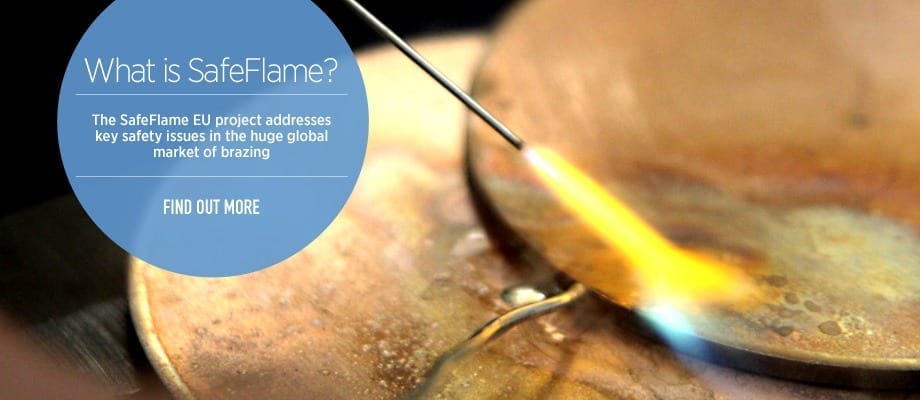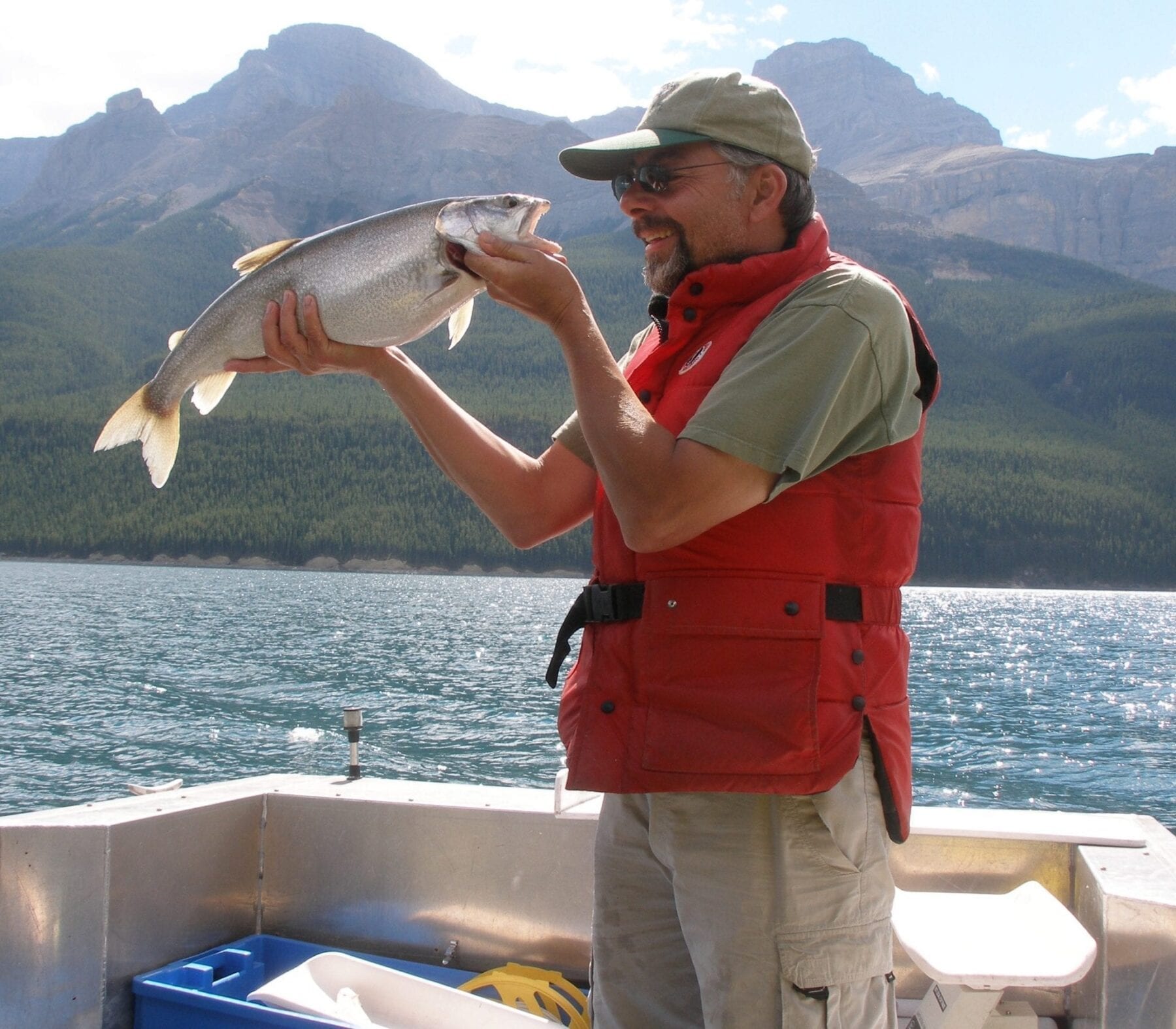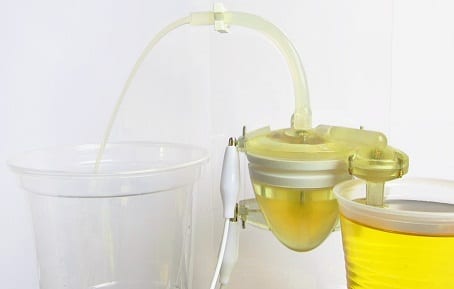
A portable device that makes fire from water has been developed within a European research project. It doesn’t use flammable gases, it produces its own fuel as needed.
Andrew Ellis, a research technologist with ITM Power, explained: “This is an electrolyzer system we’ve got here. It’s been developed to use a standard mains electricity supply, and water. The water is split into hydrogen and oxygen gases and fed into a torch where a flame is produced, which can then be used for brazing or any other industrial application where flame is used. So it’s just using water to make a flame, basically.”
Traditionally, the use of electrolyzers has been limited by the high costs of membranes and of catalysts requiring platinum or other precious metals. The researchers wanted to make this technology more affordable.
Andrew Ellis said: “We’ve got a whole team of chemists working on new formulations of membrane, which have shown increases in the performance of the electrolyzer. We’ve also been doing lots of research on catalysts, trying to reduce the amount of platinum and looking into much cheaper materials that can be used in the cells. And this research has led to big reduction in the cost of electrolyzer systems.”
Hydrogen and oxygen are recombined at the very tip of the torch, creating a flame that is cooler and much easier to handle than commonly-used mixtures of oxygen with propane or acetylene.
Rory Olney, a welding consultant, said: “You can see from the flame that it’s a lot softer compared to something like an oxy-acetylene flame. There’s no actual hot spot just off the tip of the nozzle, so glare from the flame is a lot less aggressive on your eyes. So you see I’m just wearing clear goggles.”
Pressurized bottles containing acetylene are dangerous and inconvenient. Their use is banned in locations where gas leakage could be too risky. And the hot oxyacetylene flame requires extra care when working with sensitive metals such as aluminium.
Steven Baines, a specialist in materials and joining, and the TWI/SafeFlame Project Coordinator, said: “We have high temperature, high velocity, which can melt the workpiece very quickly, and that’s one of the principle downsides.”
Hydrogen-based flame is more gentle, and cleaner too, because it only produces water when it burns.
Nick Ludford, a materials scientist with TWI, said that compared to acetylene gas, they anticipate that the cost of the gas in their new unit would be at least 20 times cheaper than acetylene – because of the absence of expenses like gas storage, insurance, and transport.
Go deeper with Bing News on:
Electrolyzer system
- The sometimes-deadly gap in US pipeline safety
The country’s system for safeguarding against toxic and deadly pipeline accidents largely relies on inspectors who work for the pipeline companies themselves, which has led to poor oversight and leaks ...
- Department of Energy Awards $5 Million to Avium to Further Develop High-Performing Electrolyzer Stacks
Avium, an alkaline electrolysis company supported by Tallgrass, receives a three-year, $5 million award from the Department of Energy (DOE). This press release features multimedia. View the full ...
- PV-driven hybrid hydrogen fuel cell system for building applications
The proposed system includes photovoltaic panels, an alkaline electrolyzer, a compressor, a gaseous hydrogen storage unit, a fuel cell system, inverters, and a control system regulating energy ...
- Adani Group eyes 5 GW electrolyzer capacity with up to $3 bn investment
Adani New would initially set up about 198.5 MW capacity and receive an incentive of up to ₹293.78 crore from the government under the scheme ...
- Plug Power Eyes Korean Expansion? Secures First International Certification For Electrolyzer Manufacturing In The Country
Plug Power secures first international safety and performance certification in Korea for electrolyzer manufacturing, enabling commercial sales in the Korean market and eyeing global expansion with new ...
Go deeper with Google Headlines on:
Electrolyzer system
[google_news title=”” keyword=”electrolyzer system” num_posts=”5″ blurb_length=”0″ show_thumb=”left”]
Go deeper with Bing News on:
Hydrogen-based flame
- Rushing to decarbonize, the shipping industry is exploring alternative fuels
Ammonia, though, is a real contender. The big benefit of ammonia is that it’s an important commodity in many other industries — notably agriculture, in which millions of tonnes of it are used every ...
- Could Underground Hydrogen Reserves Put Clean Energy Within Reach?
It took weeks for the crew to put out the blue flame, which produced no smoke ... the original crew had stumbled upon an underground store of naturally occurring hydrogen. They converted a Ford engine ...
- In the rush to decarbonize, the shipping industry is exploring alternative fuels
Designing more reliable, more efficient ammonia-burning engines is a huge challenge currently being tackled by companies like the Germany-based MAN Energy Solutions ... alongside a secondary pilot ...
- 5 Fastest Landspeed-Record-Breaking Vehicles
who had built the world's first hydrogen peroxide rocket dragster, set their sights on the absolute land speed record. Based in Milwaukee, Wisconsin, the company spent the next years developing the ...
- MasterChef Australia promoting hydrogen and biomethane as alternative to gas cooking
There, the state government is promoting the full electrification of households, such as the use of induction or other electric cooktops, over traditional gas flame cooking. MasterChef Australia ...
Go deeper with Google Headlines on:
Hydrogen-based flame
[google_news title=”” keyword=”Hydrogen-based flame” num_posts=”5″ blurb_length=”0″ show_thumb=”left”]










